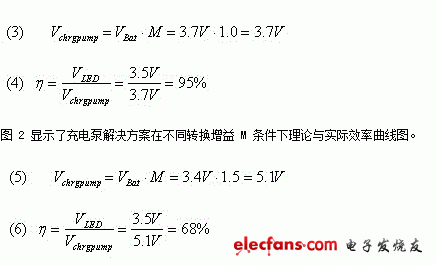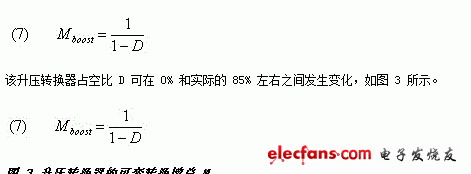Development and Reform Commission: 2015 eliminated all 60W ordinary lighting incandescent lamps
With the widespread adoption of color displays in portable markets such as cell phones, PDAs, and ultra-small PCs, a white backlight or sidelight is required for a single monochrome LCD illumination. Compared to conventional cold cathode fluorescent lighting (CCFL) backlights, white LEDs appear to be a good choice for backlight applications because they consume less power and require less space. Typical forward voltages for white LEDs range from 3V to 5V. Since the best option for powering white LEDs is to use a constant current source and the input voltage range of the Li-Ion battery is lower than or equal to the LED forward voltage, a new power solution is needed.
Key power requirements include high efficiency, small solution size, and the possibility to adjust LED brightness. For portable systems with wireless capabilities, acceptable EMI performance is another focus of our attention. Boost converters are an attractive solution when efficiency is the standard of choice for power supplies, and other common solutions are charge pump converters. In this article, we discuss two solutions for driving white LEDs and discuss their relationship to major power requirements. Another important design consideration is the control method for adjusting the brightness of the LED. The brightness will not only affect the efficiency of the entire converter, but also the chromaticity conversion of the white LED. A simple solution to control the brightness of a PWM signal is described below. Another advantage of this solution compared to other standard solutions is its higher efficiency.
task
Once a power source is selected for a white LED, the primary requirements for a portable system are efficiency, overall solution size, solution cost, and last but very important electromagnetic interference (EMI) performance. Depending on the portable system, the emphasis on these requirements varies. Efficiency is often the most important or less important consideration in critical design parameters, so consider this factor carefully when choosing a power supply. Figure 1 shows the basic circuit for a white LED power supply.

Figure 1 An excellent efficiency requires a variable conversion gain M
The lithium ion (Li-Ion) battery has a voltage range of 2.7V to 4.2V. The main task of this power supply is to provide a constant current and a typical 3.5V forward voltage for white LEDs.
Boost converter for higher efficiency than charge pump solutions
In general, there are two power supply topologies for driving white LEDs: a charge pump or switched capacitor solution and a boost converter. Both solutions offer high output and input voltage. The main difference between the two is the conversion gain M = Vout / Vin, which directly affects the efficiency; in general, the conversion gain of the charge pump solution is fixed. A simple charge pump solution with a fixed conversion gain of 2 typically produces a much higher voltage than the LED forward voltage, as shown in equation (1). It will bring about an efficiency of only 47%, as shown in equation (2).

Where Vchrgpump is the voltage generated inside the charge pump IC and VBat is the typical battery voltage of the Li-Ion battery. The charge pump needs to provide a constant current and an output voltage equivalent to the typical 3.5V forward voltage of the LED. Typically, a charge pump with a fixed conversion gain of 2 will internally generate a higher voltage (1), causing an internal voltage drop and reducing overall system efficiency (2). More advanced charge pump solutions overcome this disadvantage by switching between 1.5 and 1 conversion gains. This allows operation between 90% and 95% efficiency levels when the battery voltage is slightly higher than the LED voltage, allowing a gain of 1 to be used. Equation (3) and equation (4) show this performance improvement:
When the battery voltage is further reduced, the charge pump needs to switch to 1.5 gain, which reduces efficiency to 60% to 70%, as shown in examples (5) and (6).

Figure 2 Efficiency changes in the charge pump solution
A true double-pressure charge pump with a conversion gain of 2 has very low efficiency (down to 40%) and is not very attractive for portable devices; a charge pump with combined conversion gain (gains of 1.0 and 1.5) Shows better results. The next problem with such a charge pump is the conversion from the gain M=1.0 to the M=1.5 transition because the efficiency will drop to 60% after gain conversion. When the efficiency (conversion) occurs when the battery can operate normally most of the time, the overall efficiency is reduced. Therefore, high efficiency can be achieved when switching occurs at a low battery voltage close to 3.5V. However, this switching point depends on the LED forward voltage, LED current, charge pump I2R loss, and the voltage drop required by the current sense circuit. These parameters will shift the transition point to a higher battery voltage. Therefore, such a charging pump must be carefully evaluated in a specific system to achieve high efficiency values.
The calculated efficiency values ​​show the best theoretical values ​​for the charge pump solution. In real life, more losses occur depending on the current control method, which has a very large effect on efficiency. In addition to I2R losses, switching losses and static losses in the device will further reduce the efficiency of this charge pump solution.
These deficiencies can be overcome by using an inductive boost converter with a variable conversion gain M, as shown in equation (7) and Figure 3.

Figure 3 Variable conversion gain of the boost converter M
Air Purifier,Ionic Air Purifier,Air Purifier For Dust,Indoor Air Quality
Dongguan V1 Environmental Technology Co., Ltd. , https://www.v1airpurifier.com